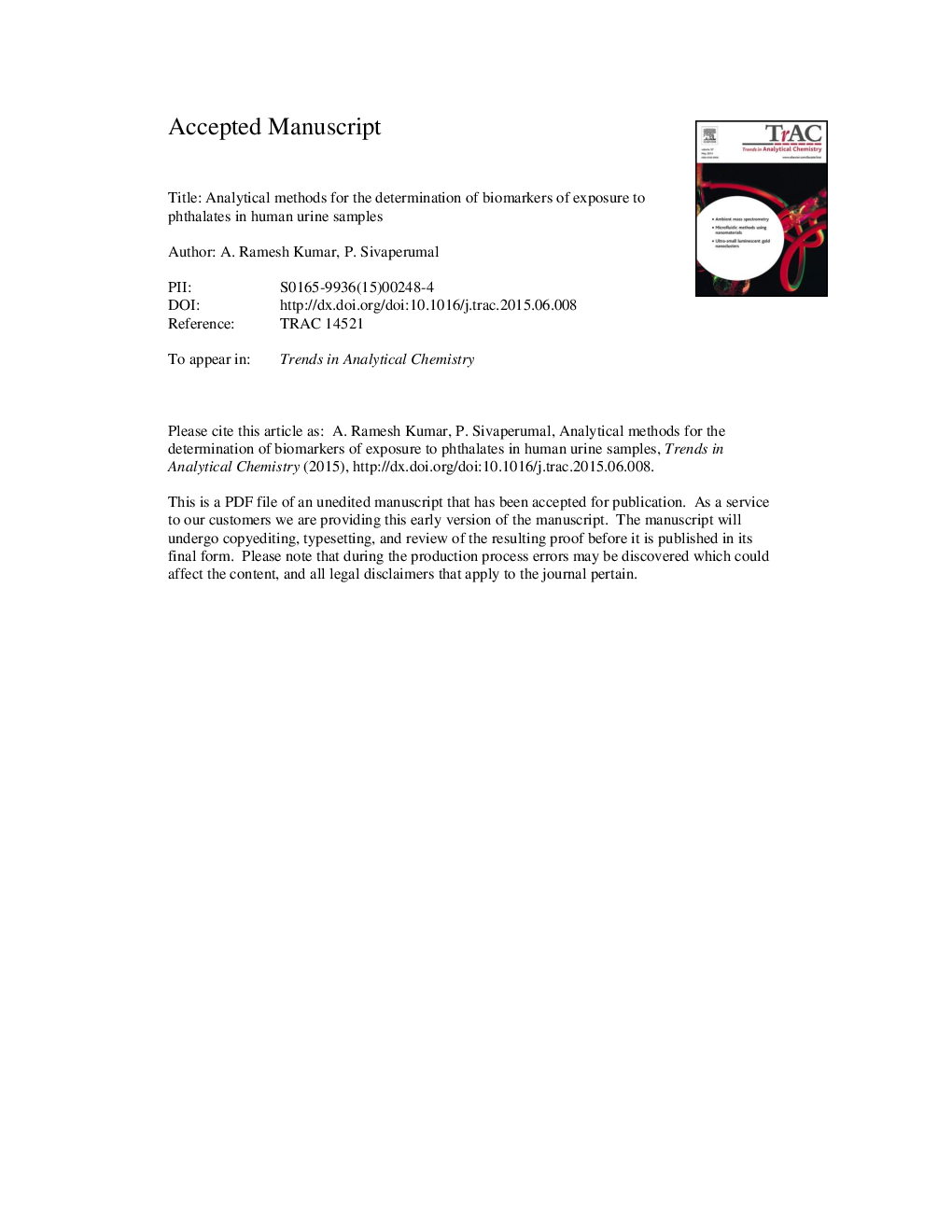| Article ID | Journal | Published Year | Pages | File Type |
|---|---|---|---|---|
| 7689151 | TrAC Trends in Analytical Chemistry | 2016 | 41 Pages |
Abstract
This study presents an overview of the analytical methods for the determination of biomarkers of exposure to phthalates in human urine samples. Phthalates are nonpersistent chemicals; hence, urine is the ideal matrix for biomonitoring besides being noninvasive and simple to collect. Phthalate monoesters and oxidative secondary metabolites are the suitable biomarkers of exposure to short- and long-chain phthalates, respectively. The determination of urinary phthalate metabolites significantly reduces the “phthalate blank problem,” which arises due to the ubiquitous presence of this chemical compound in laboratory atmosphere. Sample preparation and analytical methodologies for the determination of urinary phthalate metabolites by gas chromatography-mass spectrometry (GC-MS) and liquid chromatography- tandem mass spectrometry (LC-MS/MS) techniques were discussed. Issues on the validity of urinary phthalate metabolite data, such as intra- and interpersonal variations, variability in population subgroups, and variability due to time and type of urine sample collection, are discussed. Measures to minimize uncertainties associated with urinary phthalate metabolite concentration are also suggested.
Keywords
HFIPDPHPDiDPdi-2-ethylhexyl phthalatedi-n-butyl phthalateMiNPBzBPdi-isobutyl phthalateMOPMMPMDPMHPPMEHPMSTFAMNPDnOPdi-n-octyl phthalateMCNPMBzPMBPMEPDMP1,1,1,3,3,3-hexafluoroisopropanolDEPBSTFADIBPmono-2-ethyl-5-carboxypentyl phthalateDnBPDEHPmono-n-butyl phthalateMiBPmono-n-octyl phthalateMCOPDiNPmono-(2-ethyl-5-hydroxyhexyl) phthalatemono-(2-ethyl-5-oxohexyl) phthalatemono-(2-ethylhexyl) phthalatebenzylbutyl phthalatebiomarkers of exposureHuman biomonitoringDiethyl phthalateDi-isodecyl phthalateDi-isononyl phthalatedimethyl phthalateGas chromatography–mass spectrometry (GC–MS)Liquid chromatography–tandem mass spectrometry (LC–MS/MS)Phthalate exposurePhthalate metabolitesPhthalate monoestersmonoethyl phthalatemono-isobutyl phthalatemonobenzyl phthalateMonomethyl phthalatemono-isononyl phthalate
Related Topics
Physical Sciences and Engineering
Chemistry
Analytical Chemistry
Authors
A. Ramesh Kumar, P. Sivaperumal,
